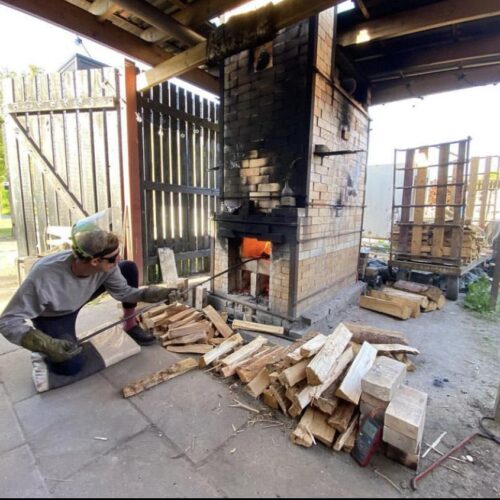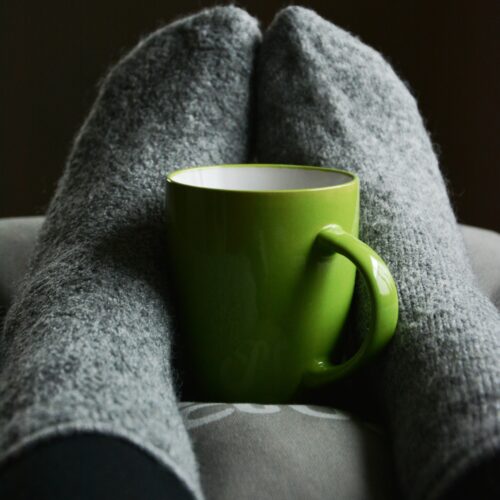
Place, surface, mapping, recording…
I’m Lydia and I’m a new OCA tutor supporting drawing 1 courses, this is a short introduction to my work…
My practice focuses on my response to a place. I am currently making work about the Taw and Torridge Estuaries in North Devon and Porlock Bay in Somerset. I’m interested in this stretch of North Devon because my Grandmother lived overlooking the River Taw for over 70 years, so my walks there are a way to revisit a place I spent much time as a child, a way to try to unpick its histories and my own interwoven memories about this place.
Porlock Bay is rapidly changing as the sea breaches the shingle bar at most high tides, the bay is part of ‘A Managed Retreat’ as test case for ways to live with rising sea levels and flooding that can be applied to the rest of the UK. I first came across the bay and made work about it 10-years ago, a week into walking the South West Coast path, it captivated me then and has continued to intrigue me ever since.
I spend time walking in these places, talking to people who I meet along the way, researching the histories, stories, geology, geographies. My aim is to try to capture and distil some of the unique visual qualities of each place through a record of my time spent there. I think of my work as alternative ‘maps’ of a place or ‘recordings’. The work broadly falls into two categories:
Drawings
the first are direct recordings that are made in the place, often using materials or processes that are from or at work there, for example; using the sea water to rust sheets of metal to mirror the rusting hulls of abandoned ships and disused jetties along the river Taw; or using metal plates that I attach to the base of my walking boots so that the texture of the ground is scratched into the surface to record the contact my foot makes with the earth at each foot step. I think of these works as drawings, they are processes that I set in action but very deliberately try to minimise my control over the output. They record not only an aspect of the place but include a time-based component, the metal plates underfoot become more scratched and distorted with every step, and the metal attached to abandoned ships and jetties become more rusted with every passing tide.

Dry point, Bideford Black Pigment, 25 x 15cm
Paintings
The second element of my work are paintings that ‘map’ my experience of walking in a place, I think of these as ‘experiential maps’. These are multi-layered and include materials collected from my walks in the form of earth to draw and paint with, snapshots of views of the horizon, drawn in ink as I walk, snippets of conversations and observations, rubbings of the ground and other surfaces I pass along the way. Back in the studio these are layered with other information from the place, visual motifs that have lodged in my memory, the shapes of the routes I walked that I track via GPS. These paintings are often made directly onto the OS Explorer maps of the place I am walking, but also on paper, board and canvas. They have elements of what Julie Mehretu refers to as the ghost image when talking about her work Grey Area made during a two-year-long residency in Berlin.

Ink, graphite on OS map 139


Ink and collected earth from Porlock on panels, 217 x 100cm
The grid is a recurring theme in my work with its obvious references to mapping, alongside Julie Mehretu, I am influenced by artists like Michelle Stuart, Tania Kovats, Ingrid Calame and Mark Bradford, particularly their focus on the grid, place-specific materials and methods of mapping / recording.
My most recent work has been a year-long collaboration with two other artists – Sarah Duncan and Nicolette McGuire – walking Porlock Bay together, using a shared blog to discuss our ongoing research and responses to the walks. The initial culmination of this project is currently on show at The Pound Arts Corsham, in a show called Between the Shadows and the Light. Our aim was to find a way to walk together and work together whilst still having the freedom to make our individual responses to the place and our experiences there.
The work combines print, installation, drawing and paintings, it has been fascinating to see the overlapping themes and processes that have emerged in each of our responses, from the use of scale and focus on the minute, often overlooked details, to the use of salt as a way to replicate the processes we observed as the low lying farmland floods at each high tide to gradually shift to become salt marsh. The project has the potential to be a new way to work with other artists, and also researchers from different disciplines to create a varied response to a place, one that could merge fact with fiction perhaps.
I’m really looking forward to working with level 1 students to support their drawing practices and finding out how they approach their own visual research – for me this is always a two-way conversation as we explore the endless possibilities of drawing and mark-making.

Collected plastic from Porlock Bay and salt crystals in acrylic box, 40 x 25cm
Between the Shadows and the Light is at The Pound Arts, Corsham, Wiltshire until April 28 with artists talk on April 18, please book via the website http://www.poundarts.org.uk
|
|







Thanks for sharing your work Lydia. I’m a photography student, hoping to start shortly on L2 Landscape, so your description of your response to place is inspiring for me. I’m very interested in expanding beyond photography to record what I see and feel. My understanding of what ‘drawing’ is has been very much expanded over the past year in following some fellow students and your post adds to this.
Thank you Lydia. Very interesting work and timely for me as I am exploring ways of getting to grips with how and what a landscape can communicate to me and how I can translate this into a drawing/painting.
This was a delight you read and very inspiring to me as I start on a parallel project to my Investigating Drawing course. The project is to try to find an expression in drawing of my feelings for the place I’ve loved and lived in for many years, and am soon to leave, probably for ever. You’ve described a unique approach in your response to place.
Thanks for sharing your work. I am also looking at the role of the artist as a recorder and your work really resonates with me. I’ll also be researching the artists who have inspired you. Good luck in your new post.
Thank Lydia. I really like you work, especially your use of the grids to reference mapping and the ideas of ghost images. I’m also inspired by Julie Mehretu but I haven’t come across the other artists you mention. I’ll definitely look them up.